Telensa recently supported key partner Kainos in its design week programme with Aston University. The theme this year was about exploring new solutions made possible by a connected, intelligent urban environment.
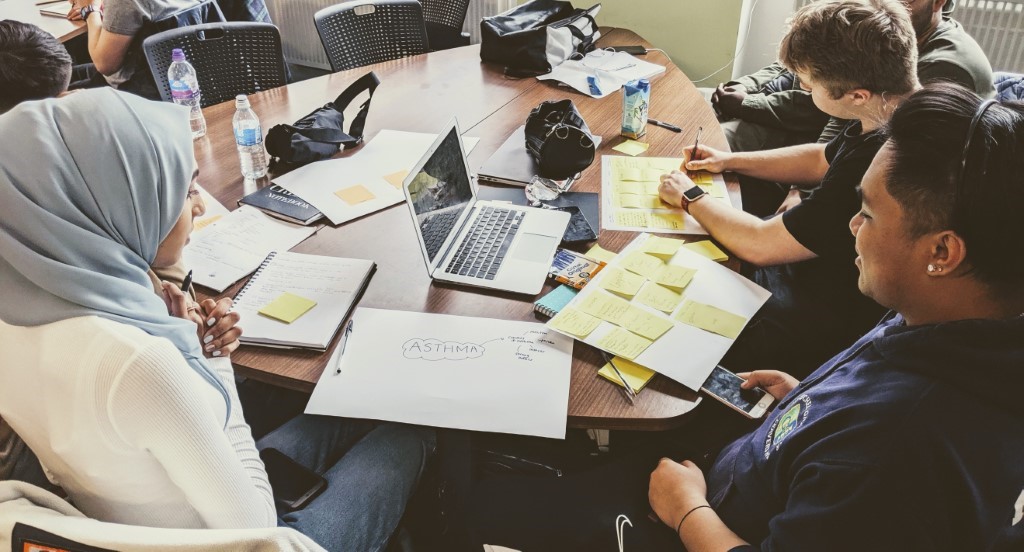
Kainos has been growing its Birmingham office over the last 18 months, and one of the key pillars has been to also build good relationships with local universities. The company has always had strong ties with academic institutions from its roots in Belfast and knows how important it is to support and develop future talent while providing links between technology research and its commercial applications. This applies equally to design disciplines as to engineering capabilities, so Kainos has sought out university programmes to partner with that have similar approaches to design practice.
Aston University’s School of Engineering and Applied Sciences is home to not only the Computer Science department we have recruited graduates from previously, but also the Product Design BSc courses which have at their core the User-Centred Design approach we advocate and apply at Kainos Design.
At the start of each academic year, the Product Design courses kick off with a week-long design competition for the 2nd and final year students. The brief is set by an industry partner and supported by insight sessions and activities related to the brief. This year, we were really pleased to have the opportunity to provide the brief, and in looking to incorporate more than just digital design aspects, it was a great chance to frame the challenge around our exciting partnership with Telensa.
Monday

While the Urban Data Project and the City Data Guardian is necessarily focussed around the layers of trust and management of the wealth of data produced by the multi-sensor pods at an organisational and administrative level; we wanted the students to explore the human aspect of what it might mean to live in a connected, intelligent urban environment.
After an introduction to Kainos and our Birmingham office I spoke a bit about my own journey from a Product Design degree course to a career in Digital Product Design.
Then we explored what the concept of smart cities meant to the students where I was pleased and impressed by their answers; a lot of insightful and on-the-money descriptions of what Smart Cities could be and their likely impact. The followed an intro to Telensa and our partnership on the Urban Data project, after which I was able to introduce the briefs.
Under the title of ‘Augmenting the human experience in the smart city of the future’, we set the students three separate briefs to design a connected product to help citizens benefit from living in an intelligent urban environment.
1. Enable increased use of sustainable transport:
Design a product that will help people to find the best route to travel by bike.
2. Reduce the impact of living in an urban environment on health:
Design a product that will help people with asthma living in the city to minimise the risk to their health.
3. Enable citizens to take greater control of their data and privacy.
Design a product that helps citizens living in a connected city to indicate how much of their data they are willing to share.
The intention of the briefs was to offer enough direction that the students didn’t spend the short time they had available entirely in research, but also to leave some scope for exploration as to the different ways the outcomes could be achieved. Our hope was that in the process of exploring digital and physical product solutions to these challenges, they might tease out some ideas, questions and different perspectives that may not have been considered.
Before getting started, the participants had a session with Marc Nevin and Marc Templeton from Kainos’ Applied Innovation team who had made the trip over from Belfast. They were able to impart a ton of insights around the practical applications of IoT sensor technology combined with Machine Learning that was in equal measures inspiring and daunting. A very positive aspect of the session was the amount of discussion generated about privacy, ethics and trust; exactly what we hoped would happen! At the heart of all our work with Telensa on building the City Data Guardian is a focus on security and empowering smart cities’ Chief Data Officers to build public trust and engagement. Having the students examine what that trust meant to them in their own experience of data sharing through platforms like social media and how that might evolve in the future was invaluable. It would help ensure they kept those privacy and trust considerations to the front of their mind when designing solutions to the challenges we’d set.
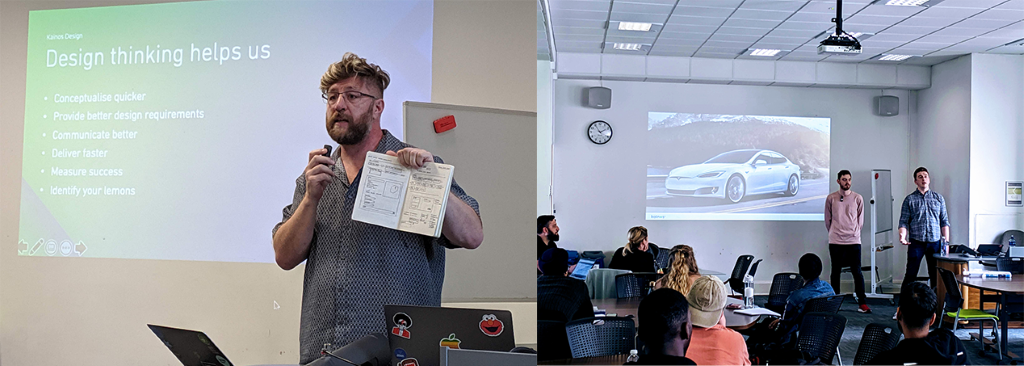
After spending some time exploring the briefs they had chosen, the students were then treated to some further insights from our Design Lead on the Telensa project, Duncan Millar. He gave real world examples in the application and benefits of design thinking methodology with particular focus on the approach to his work on the Urban Data project. They also got a peek inside his famous notebook, and armed with his encouragement to start broad, conceptualise quickly, identify their lemons and kill their babies - the students were able to get started on their week-long design challenges!
Friday
After the great conversation and initial glimpses of different approaches to the problems being explored that I'd seen on Monday, I was excited to see the presentations on Friday. We had gathered a selection of prizes for the top three teams, including Amazon vouchers, copies of The Design Thinking Playbook and some mobile UI design notebooks to help in their future digital design endeavours.

We were scoring the teams against a number of criteria;
• Context of a connected city.
• Use of data available from multi-sensor pods.
• Consideration of citizens' privacy and trust.
• Quality of design (User-Centred).
• Meeting the brief (with extra points gained here for innovative approaches).
• Quality of presentation.
Each of the teams took roughly 5 minutes to present their ideas and thinking on the screen, talking us through their thinking and design process before showing their final designs. There were some really good presentations – some in terms of their content, some for their success in developing a concept, and others for the questions they raised. For example:
A ‘passive climate indicator’ in the form of an artificial plant which responded to the data about the levels of pollution and weather conditions outside by growing or shrinking its leaves as an indicator to the user, tailored to the individuals’ triggers.
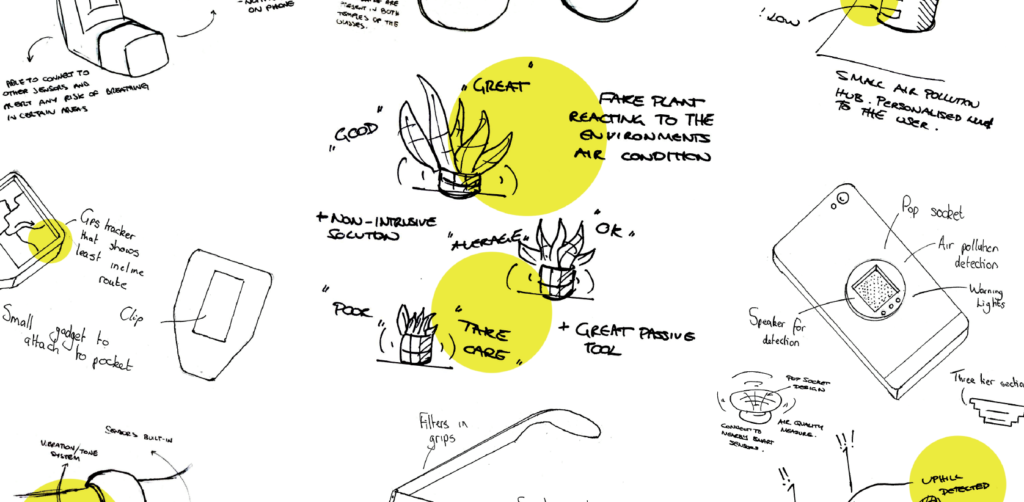
Others went further in their consideration of individual preferences, particularly in the inclusion of social media data to tailor the experience of travel in the context of an asthma sufferer or cyclist. One or two teams also considered how in addition to gathering data about the environment, we might then look to directly affect the conditions identified by the sensors.
The teams who were most successful were those who had really understood the context and then dived deeper into what that might mean for society and individual citizens.
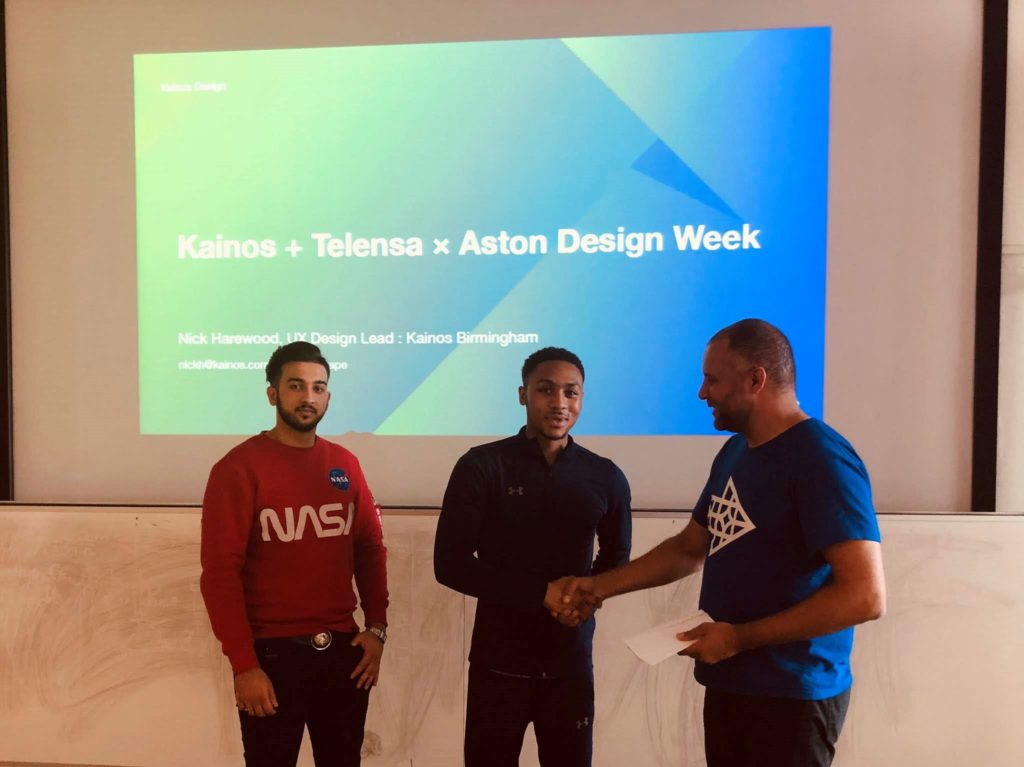
The third placed team were one of a few teams who explored the idea of a connected asthma inhaler paired with an app. Their concept was well realised in physical design and how it made use of data but their presentation also explored ideas around social change – critical to the design process as the world around us continues to develop at astounding pace.

The team who took second place had a great presentation that invested as much time and effort into understanding the context and exploring the product-user lifecycle as the end-product design itself, if not more. Their description of the product as an end-point of a service built on data and machine learning was really well considered and picked up on some key aspects of the brief.
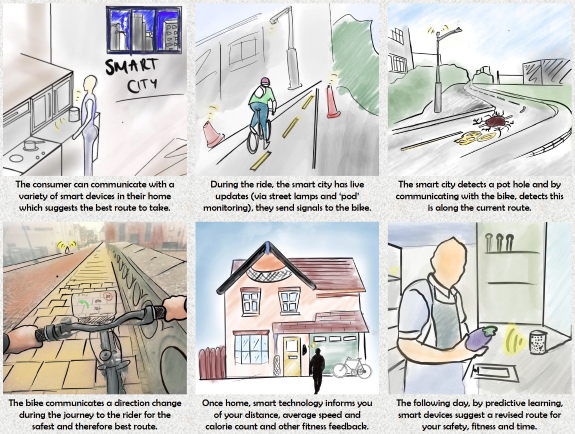
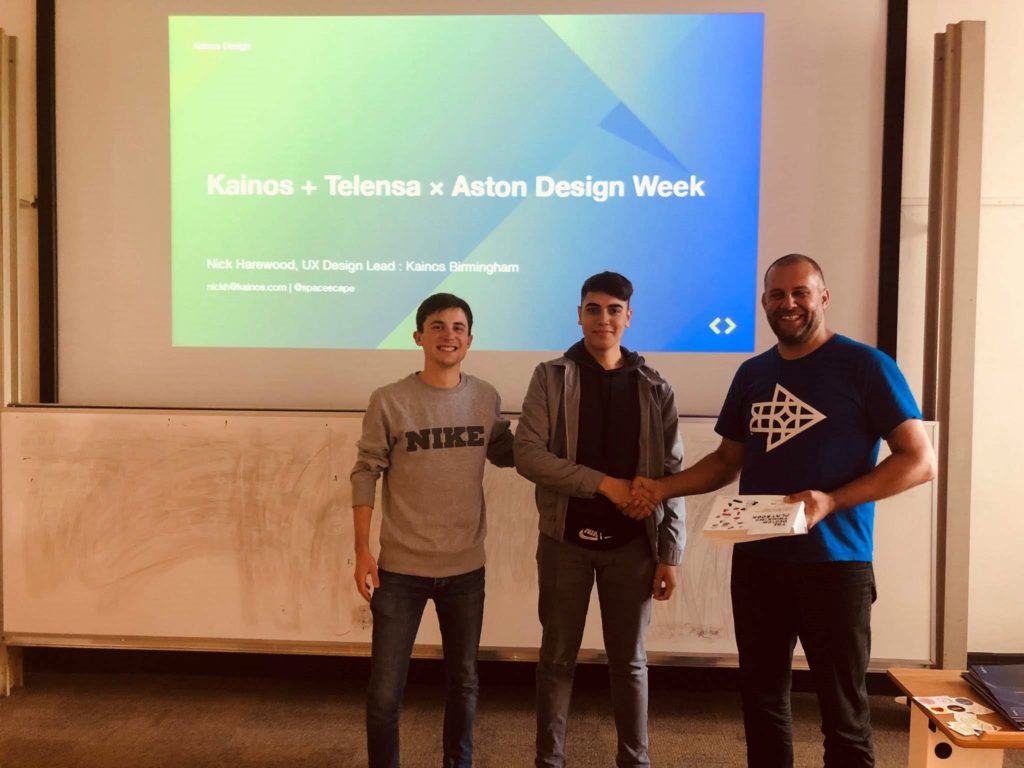
Finally, the winning team’s presentation of a solution to help people living with Asthma in an urban environment gave a great insight into the research they had done around the problem space which then informed a well-described and broad ideation process. They spoke about the different options they had considered, and importantly, why they had discounted them. Their solution built upon existing digital infrastructure, was tailored to the individual’s triggers and gave real consideration as to how the user’s privacy should be protected. They also left us with some real food for thought around how smart cities and the data we gather will impact on communities, neighbourhoods and local economies.

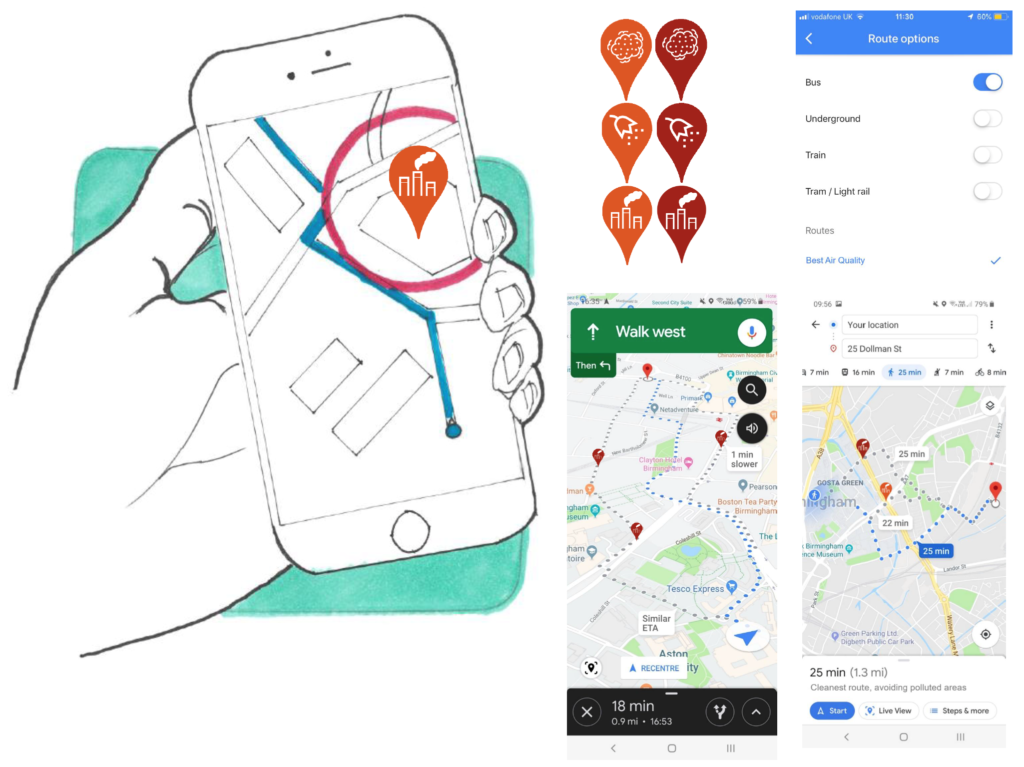
The time we spent with the students on during the week was great fun and an excellent opportunity for us to reflect on our own work, considering design as a wider discipline than the largely digital world we work in. The return on that small investment on our part was really impressive to see; how the design week participants had taken those briefs, explored the context and applied different ways of thinking with their own fresh, youthful perspective on the world.
Huge thanks to Dr Becky Mallaband and colleagues at Aston University for inviting us to sponsor Design Week, and their hospitality in looking after the team visiting to share their insights; it was a real pleasure and something we would love to do more of. It was a great job by all the teams, and we were really impressed with how they had engaged with the brief – we are sharing their insights back with the project team and our friends at Telensa. We’ll also be keeping an eye on the exciting projects coming from the Aston Design students over their next couple of years!
“We were thrilled to be joined by the team from Kainos for our annual design week. Our students really enjoyed getting stuck into the live design briefs, and in particular to think about how their products can be part of a smart city of the future, along with the ethical issues that might come along with the use of more intelligent technology.”
Dr Becky Mallaband, Senior Lecturer in User-Centered Design at Aston University
First published on Kainos website by Nick Harewood 25 October.
Topics: Urban design, Kainos

